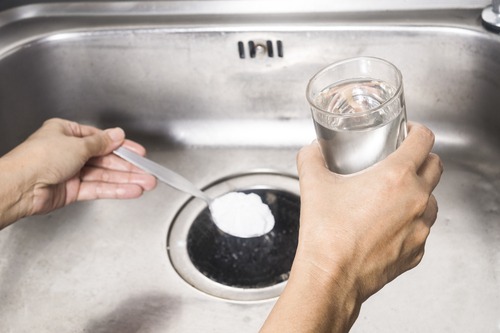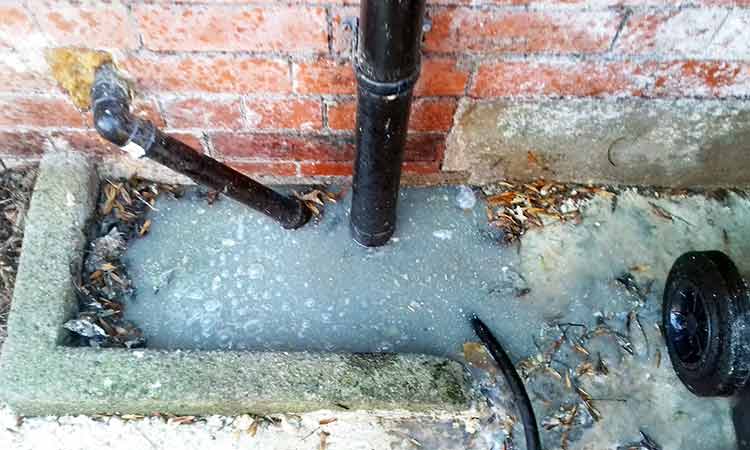Do you find yourself hunting for info around Some easy tips to fix blocked drains?

Introduction
Handling a blocked drain can be an irritating experience, disrupting daily tasks and potentially causing damages to your property. Nevertheless, prior to reaching out to pipes professionals, there are steps you can require to deal with the concern on your own. In this guide, we'll check out DIY remedies and preventive measures to take on a blocked drainpipe successfully.
Identifying the Problem
The first step in resolving a blocked drain is identifying the signs. Sluggish water drainage, gurgling sounds, foul odors originating from drains pipes, or water backing up are common signs of an obstructed drainpipe. Identifying these signs early can assist stop better problems.
Typical Root Causes Of Obstructed Drainpipes
Recognizing the variables that contribute to drain pipes clogs is essential for effective resolution. Typical offenders include hair, soap scum, grease, food particles, and international items like sanitary products or paper towels. Tree roots invading underground pipelines can additionally trigger significant obstructions.
DIY Solutions
For minor clogs, numerous do it yourself options can be reliable. Pouring boiling water down the drain can help dissolve grease and particles. Baking soda and vinegar or a blend of salt and baking soft drink can function as all-natural cleansers. Utilizing a plunger or plumbing serpent to remove blockages is an additional option.
Tools and Tools
Having the right devices accessible can make DIY drain cleansing much more reliable. A plunger is a functional tool for clearing blockages in sinks, commodes, and showers. A plumbing snake or auger can get to deeper blockages, while drainpipe cleaning chemicals can be made use of very carefully for persistent blockages.
Safety nets
To prevent future obstructions, taking on safety nets is essential. Set up drain guards or strainers to catch hair and debris prior to they get in the pipelines. Frequently flush drains with hot water to dissolve grease buildup, and avoid getting rid of grease or solid waste down the drain.
When to Call an Expert
While DIY solutions can resolve small clogs, specific signs indicate the demand for specialist help. Consistent obstructions, foul odors in spite of cleaning initiatives, or numerous drains pipes supporting concurrently are warnings that necessitate experienced intervention.
Selecting the Right Pipes Solution
When selecting a plumbing service, think about factors such as experience, licensing, and client reviews. Select a credible plumbing technician with a track record of high quality handiwork and clear pricing methods.
Price Factors to consider
The cost of expert drainpipe cleaning company can differ depending on the seriousness of the obstruction and the plumbing technician's prices. Demand quotes from numerous carriers and ask about any type of service charges to make sure openness and prevent surprises.
Safety Precautions
When trying do it yourself drain cleaning, focus on safety. Put on safety handwear covers and eyeglasses to prevent contact with hazardous chemicals or bacteria. Never ever blend different drainpipe cleaning items, as this can create dangerous fumes.
Instance Researches
Real-life examples highlight the efficiency of DIY remedies and the value of prompt expert treatment in fixing drainpipe blockages.
Conclusion
By complying with the ideas described in this overview, you can effectively tackle obstructed drains and avoid future pipes problems. Whether going with DIY services or looking for specialist assistance, punctual activity is key to maintaining a healthy plumbing system and protecting the stability of your home.
How to Clear a Clogged Drain Yourself (And When to Call In the Professionals)
What Can Clog a Drain
Dirt Skin flakes Hair Grease Soap scum Food Offset pipes Tree roots Small objects Mineral buildup DIY Tricks to Unclog a Drain
You can fix this! Once you have identified the source of the clog (or have a vague idea), you can try one or a combination of these fixes in order to clear your plumbing.
Wire Hanger or Snake
Untangle and clear out hair from a drainpipe with a homemade snake. Use a straightened-out wire hanger with a 90-degree angle hook to locate the clog and drag out any unwanted material.
Remember not to push the clog further down to where the wire hanger cannot reach! If you need to follow up with a plunger, give it a try. Your efforts might be more successful after it’s been wire-snaked.
If you want to get fancy and don’t have a wire hanger to spare, head to the store and pick up a hand-operated drain snake. You can get one for $10-$30. It may save you the hassle, and provide additional length to reach deep into the clogged pipe.
Plunger
A cup plunger has a suction cup attached to a wooden handle. The rubber creates a seal around the drain, and increases the pressure force of the plunger.
Plunge for 30-second increments to loosen the clog. This may need to be repeated over the course of 15-20 minutes. Once plunged, run the water to flush the remaining material out of the drain.
Remember– never use a plunger if you have used a chemical drain cleaner. These chemicals can splash up from the force of the plunger and cause serious injury or burns.
Boiling Water
Hot water can sometimes break up materials into a flushable amount. Dirt, grease, and soap buildup requires heat in order to unstick from surfaces.
Take your kitchen kettle and heat your water to a boil. Once it reaches a rolling boil, pour it directly down the drain into the blockage. Carefully follow with plunging, if necessary.
Don’t worry if this takes more than one try! It can often take multiple kettles and repeated plunging in order to clear a particularly stubborn clog.
Chemical Drain Cleaner
As a last resort, pick up a bottle of chemical drain cleaner. Drain-cleaning chemicals are potent, and not very good for the environment.
You may need to wear protective eyewear in gloves before handling your bottle of chemical drain cleaner. Follow the instructions printed on the bottle, and flush with water as soon as the instructions allow. Do not follow with plunging.
Baking Soda and Vinegar
As a safer alternative to chemical drain cleaner, baking soda and vinegar can create a chemical reaction that clears tough clogs.
Combine one cup of cleaning vinegar with one cup of boiling water, and set aside. Once you have done this, pour half a cup of baking soda down the drain. Give the baking thirty seconds to settle and cover a large portion of the problem drain.
Following the baking soda, pour down your vinegar and hot water solution. Once the vinegar and baking soda combine, the mixture will bubble and fix. Let this reaction fizzle in the drain for about an hour.
After an hour, follow with a kettle’s worth of hot water. The heat and liquid should flush out any remaining material.
When to Call a Plumber
If your DIY attempts haven’t cleared your clog drain, it’s time to call in a professional. It’s not worth losing access to your kitchen sink or high-traffic bathroom. A clog in a vital area can keep you from the things you’d rather be doing, and derail your routine.
Anytime a clog is causing water to spread is a time to call in a plumbing service. What starts out as a little bit of water can quickly grow into serious, expensive water damage.
Additionally, a serious clog can result in burst pipes or serious leaks. Make sure you know when to take it seriously!
https://myguysnow.com/how-to-clear-a-clogged-drain-yourself-and-when-to-call-in-the-professionals/

I am just very fascinated with Some easy tips to fix blocked drains and I hope you enjoyed the entire blog post. Kindly set aside a second to distribute this page if you appreciated it. We value reading our article about Some easy tips to fix blocked drains.
Recurring Service Plans